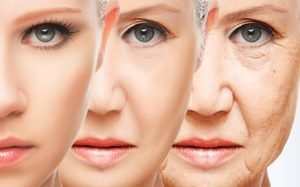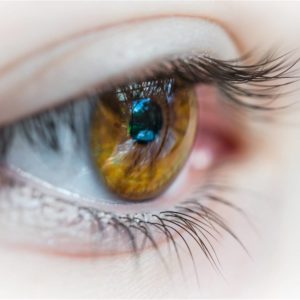Mitochondria: the engine of your body

Tiredness, migraines, stress or depression can be due to a lack of energy in the cells. Science is discovering the valuable role that mitochondria have in physical and mental health. How to take care of them?
physical and mental activity in the body requires a contribution of energy. Diet is key to provide the body with the nutrients necessary for optimal health: they would be firewood to stoke the fire. Through the digestion of food, the body manages to fragment and obtain nutrients, but in this process, not only is not energy generated, but rather, energy is consumed.
It is in the mitochondria where the true transformation of nutrients occurs to release the energy they possess, and this is done in the form of ATP , a molecule known as “the energy currency . ” The mitochondria works as a power station: it has the ability to use oxygen to burn the food it receives in a controlled way , and thus obtain the energy we need to feel good, carry out all daily activities, and to supply the needs of all the organs.
The energy of our organism is produced in the mitochondria, an organelle located inside each cell that acts as a true motor capable of manufacturing it so that the body and mind function correctly and without problems.
ENERGY TO WARD OFF ILLNESS AND MAINTAIN GOOD MENTAL HEALTH
The most important difference between a normal cell and a tumor cell is the way it breathes, that is, the way it generates energy. This was discovered by Otto Warburg in 1920, when he showed that damage to the mitochondria was related to the appearance of cancer. Today we know that the mitochondria not only orders the metabolism and produces energy under normal conditions, it is also part of its functions to tell the cell when to reproduce and when to die .
Numerous factors are capable of inducing mitochondrial failure , including viruses, bacteria, toxins, radiation, genetic mutations, chronic stress, and others. What they all share is the disruption of normal cell respiration.
Thus metabolic, immune and bioenergetic changes occur , which promote neoplastic processes, cardiovascular disease, metabolic syndrome, dysfunctions of the immune system and neurodegenerative disease, including alterations in mental health , fatigue, autism, depression and chronic stress, all with a significant mitochondrial energy dependence .
Science shows how anxiety, chronic stress, migraine, autism, depression, dementia or Parkinson’s can be associated with the effect of mitochondrial alteration.
Brain activity also depends on mitochondrial function. In reality, what scientific studies are drawing is a panorama in which the mitochondria determines the correct functioning of biological systems, and from its failure a very wide range of neurodegenerative and mental diseases is derived.
CONSERVE YOUNGER CELLS
Oxygen free radicals are produced in the combustion process that takes place inside the mitochondria . These have a strong damaging effect on DNA, that of the mitochondria itself and that of the cell nucleus. As a consequence , genetic alterations that are related to multiple neurodegenerative diseases and cancer are promoted .
In addition, free radicals decrease the efficiency of the mitochondria itself and the aging process appears inexorably , linked to the deterioration of the cellular respiration mechanism.
LESS TOXIC, MORE AEROBIC EXERCISE
Having a good amount of functionally competent mitochondria is an essential contribution to physical and mental health , cancer prevention, aging and neurodegenerative disease.
It is necessary to avoid aggressions and toxics such as alcohol or tobacco, that deteriorate or destroy them; including commonly used medications such as anti-inflammatories, statins, and antibiotics.
The western diet is not a good ally of mitochondrial health, nor is sedentary lifestyle or toxins, which end up generating free radicals. Aerobic exercise at high intensity intervals, allows you to eliminate damaged mitochondria and produce new, more effective ones.
The most direct way to increase mitochondrial density is to put the motor to work; And in this sense, practicing exercise systematically and with good intensity allows you to get rid of damaged mitochondria , which do not work properly, and develop new, more effective units. Thus, aerobic exercise is beneficial, but much more so when performing strength work, high-intensity interval training, and especially fasting or with little glucose available, in order to increase fat consumption.
SYNCHRONIZE THE MITOCHONDRIAL CLOCK
Mitochondria have a biological clock that follows circadian rhythms, meal times, sleep, peak hours of increased activity and alertness, and valleys of rest and calm.
Light is the main conductor who conducts the entire orchestra of the biological clock; and melatonin, the hormone that regulates mitochondrial rhythm , is key to achieving mental stability and adequate cognitive competence. Following the hourly rhythms of the sun helps to make good doses of melatonin.
THE DIET THAT INCREASES ENERGY
Diet is key to providing the essential vitamins and coenzymes to ensure that the mitochondria can generate the necessary energy.
Caloric restriction, intermittent or prolonged fasting, and the activation of the metabolic pathway of fats (instead of sugars) have shown a powerful effect in eliminating mitochondria that are already old or not functional, and to renew the intracellular energy park.
Fasting protects from oxidative damage by preventing the production of free radicals, while the ketogenic diet constitutes a true metabolic rehabilitation that activates ancestral genetic resources for times of lack of fuel and high physical demand.
FOOD FOR MITOCHONDRIA
Some vitamins and coenzymes are essential for the necessary energy to be generated. These are the ones that cannot be missing from your diet:
ASCORBIC ACID (VITAMIN C).
It is an essential nutrient, regulator of oxidation processes . It protects the brain from free radicals, its vascular endothelium and is necessary to manufacture neurotransmitters.
Where found : orange, grapefruit, kiwi, carrot, radish, banana, asparagus, broccoli, cabbage, bell pepper, tomato, and strawberries.
VITAMIN B1 (THIAMINE).
It has antidepressant and toning properties. It is known as the character vitamin , for its effects on mental health and learning .
Where found : green peas, spinach, white beans, nuts, soy.
VITAMIN B3 (NIACIN).
Generates a calming and anxiolytic effect .
Where found : green peas, peanuts, beans, soybeans.
VITAMIN B5 (PANTOTHENIC ACID).
It is the one that acts on insomnia, memory loss and depression .
Where found : walnuts, avocado, mushrooms, lentils, beans, beans.
VITAMIN B6 (PYRIDOXINE).
It exerts a beneficial effect in patients with schizophrenia, mental retardation and autism .
Where found : whole grains, potatoes, cantaloupe, bananas, nori seaweed, brewer’s yeast, shitake mushrooms.
COENZYME Q10 (UBIQUINONE).
It is an electron transporter in the respiratory chain of the cell. Coenzyme Q10 is beneficial in neurodegenerative diseases such as
myoclonic epilepsy, migraine, chronic fatigue, cancer, Parkinson’s, fibromyalgia, or depression.
Where found : green leafy vegetables like spinach, broccoli and cauliflower, peanuts, sunflower seeds, soybeans.







